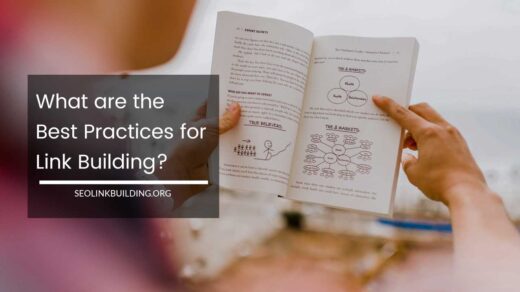Open Graph Meta Tags: Everything You Need to Know

Open Graph Meta Tags
Open Graph Meta Tags: Everything You Need to Know
In the ever-evolving digital landscape, where the battle for attention is fierce and competition is fierce, optimizing your website for maximum visibility and engagement is more critical than ever.
One of the most effective tools at your disposal for enhancing your online presence is the use of Open Graph meta tags.
These tags, developed by Facebook, provide a structured way to convey information about your web page to social media platforms, search engines, and other applications.
By implementing Open Graph meta tags effectively, you can significantly boost your website’s shareability, discoverability, and overall performance, ultimately leading to greater success in the crowded online arena.
What Are Open Graph Meta Tags?
Open Graph meta tags are part of the Open Graph protocol, which is an open standard used to enable web pages to become rich objects in a social graph.
This protocol was initially developed by Facebook but has since been adopted by various social media networks and platforms.
The primary function of Open Graph meta tags is to provide metadata that can be used to control how your content appears when shared on social media.
This includes specifying the title, description, image, and other attributes that can influence the presentation of your content on platforms such as Facebook, Twitter, LinkedIn, Pinterest, and beyond.
Why Open Graph Meta Tags Matter
The implementation of Open Graph meta tags can significantly impact your content’s performance on social media. Here’s why:
- Enhanced Visual Appeal: When users share your content on social media, Open Graph meta tags help ensure that it appears with a visually appealing preview, including a high-quality image, an engaging title, and a compelling description. This can lead to higher click-through rates and better engagement.
- Consistency Across Platforms: Open Graph tags provide a standardized way to present your content across different social media platforms. This consistency helps maintain your brand’s identity and ensures that your content is displayed as intended, regardless of where it is shared.
- Improved Click-Through Rates: Well-crafted Open Graph tags can make your content more enticing to users. By providing a clear and attractive preview, you increase the likelihood that users will click on your links, leading to higher traffic and engagement.
- Better Analytics and Tracking: Many social media platforms provide analytics tools that allow you to track how your content performs when shared. By using Open Graph meta tags, you can gather insights into how your content is being interacted with, helping you make data-driven decisions to improve your social media strategy.
Key Open Graph Properties
Open Graph is a protocol used by social media platforms to understand and share information about web pages. Here are some of the key properties commonly used:
Core Properties
- og:title: The title of the article.
- og:description: A brief summary of the article.
- og:type: The type of object represented by the URL. Common types include “article,” “website,” “book,” and “video.”
- og:url: The canonical URL of the object.
- og:image: The URL of an image associated with the object.
- og:site_name: The name of the website or application.
Additional Properties
- og:locale: The locale of the object, e.g., “en_US.”
- og:audio: The URL of an audio file associated with the object.
- og:video: The URL of a video file associated with the object.
- og:determiner: Indicates whether the object is a definite or indefinite noun (e.g., “a” or “the”).
- og:published_time: The publication date of the object.
- og:modified_time: The last modification date of the object.
- og:expiration_time: The expiration date of the object.
Article-Specific Properties
- og:article:published_time: The publication date of the article.
- og:article:modified_time: The last modification date of the article.
- og:article:author: The name of the article’s author.
- og:article:section: The name of the article’s section.
- og:article:tag: Keywords associated with the article.
Video-Specific Properties
- og:video:width: The width of the video.
- og:video:height: The height of the video.
- og:video:duration: The duration of the video in seconds.
- og:video:type: The MIME type of the video file.
For more information and additional properties, refer to the official Open Graph documentation.
Note: While these are the most common properties, there may be other properties specific to certain platforms or use cases.
Implementing Open Graph Meta Tags
Implementing Open Graph meta tags involves adding them to the <head> section of your HTML document. Here’s a step-by-step guide to ensure proper implementation:
- Identify Your Key Content Elements: Before adding Open Graph tags, identify the key elements you want to include in your social media previews, such as the title, description, image, and URL.
- Insert the Meta Tags into Your HTML: Add the Open Graph meta tags to the
<head>section of your HTML document. Here’s a basic example:
<head>
<meta charset=”UTF-8″>
<meta name=”viewport” content=”width=device-width, initial-scale=1.0″>
<title>My Awesome Website</title>
<meta property=”og:title” content=”My Awesome Article”>
<meta property=”og:description” content=”A great article about something amazing.”>
<meta property=”og:image” content=”https://example.com/my-awesome-image.jpg”>
<meta property=”og:url” content=”https://example.com/article”>
<meta property=”og:type” content=”article”>
<meta property=”og:site_name” content=”My Website”>
</head>
- Ensure Correct Syntax: Ensure that the syntax of your meta tags is correct. Each tag should use the
propertyattribute and be enclosed in<meta>elements. - Test Your Implementation: After adding the meta tags, use social media debugger tools to test how your content appears when shared. Tools such as Facebook’s Sharing Debugger or Twitter’s Card Validator can help you identify and fix any issues.
- Monitor and Update: Regularly monitor how your content appears on social media and update your Open Graph tags as needed. If you make significant changes to your content, ensure that your meta tags reflect those updates.
Best Practices for Open Graph Meta Tags
To optimize the effectiveness of your Open Graph meta tags and ensure they contribute to your content’s success, follow these best practices:
- Use Clear and Concise Titles and Descriptions: Your titles and descriptions should be straightforward and compelling. Avoid using jargon or overly technical language, and ensure that the content accurately represents what users will find when they click through.
- Choose High-Quality Images: Select images that are visually appealing and relevant to your content. High-quality images can make your content stand out and encourage users to engage. Ensure that the images meet the recommended dimensions for social media platforms to avoid cropping or distortion.
- Verify Your Implementation: Use social media debugging tools to check how your content appears when shared. These tools can help identify issues such as missing tags, incorrect URLs, or improperly formatted images.
- Update Your Tags Regularly: Whenever you make significant changes to your content, update your Open Graph tags to reflect those changes. This ensures that your social media previews remain accurate and engaging.
- Leverage Plugins and Tools: If you use a CMS like WordPress, consider using plugins that can help manage and implement Open Graph meta tags. These tools can simplify the process and ensure consistency across your site.
- Optimize for Performance: Ensure that the images used in your Open Graph tags are optimized for web performance. Large or uncompressed images can slow down page load times, negatively impacting user experience and engagement.
Additional Considerations
While Open Graph meta tags are essential for social media optimization, there are additional factors to consider:
- Facebook-Specific Properties: Facebook offers additional Open Graph properties that can provide more context about your content. For example:
og:video: Use this property to include video content in your social media previews.og:audio: Allows you to include audio content.og:locale:alternate: Specifies alternate language versions of your content, which can help reach a broader audience.
- Twitter Cards: Twitter has its own set of meta tags known as Twitter Cards. These tags allow you to customize how your content appears on Twitter. Implementing Twitter Cards alongside Open Graph meta tags ensures a consistent appearance across different social media platforms. Twitter Cards include properties such as:
twitter:card: Defines the type of card to display (e.g., summary, summary_large_image, player).twitter:title: Specifies the title of the content.twitter:description: Provides a description of the content.twitter:image: Defines the URL of the image to be displayed.
- Other Social Media Platforms: In addition to Facebook and Twitter, many other social media networks support Open Graph meta tags. For example, LinkedIn and Pinterest also use Open Graph properties to display content previews. Check the specific requirements for each platform to ensure your content is displayed correctly.
- Performance and Loading Speed: Consider the impact of Open Graph tags on your page’s performance. Optimize images for web use to avoid slow load times. Tools like image compressors can help reduce file sizes without sacrificing quality.
- Testing and Monitoring: Regularly test how your content appears on social media and monitor engagement metrics. Analyze how well your Open Graph tags are performing and adjust your strategy based on user interactions and feedback.
Case Studies and Examples
To illustrate the impact of Open Graph meta tags, let’s examine a few case studies and examples of how effective implementation can drive success:
- E-Commerce Site Optimization: An e-commerce site implemented Open Graph tags for their product pages, including high-quality images, engaging titles, and detailed descriptions. As a result, they saw a significant increase in click-through rates and social media engagement. By using Open Graph tags to display product information and images attractively, they were able to drive more traffic to their site and increase sales.
- Content Publisher Success: A content publisher optimized their blog posts with Open Graph meta tags, focusing on clear titles, compelling descriptions, and visually appealing images. This led to higher social media shares and increased referral traffic to their site. The improved visibility and engagement resulted in a noticeable boost in readership and brand awareness.
- Non-Profit Campaign: A non-profit organization used Open Graph meta tags to enhance the visibility of their fundraising campaign on social media. By incorporating persuasive titles, emotive descriptions, and impactful images, they were able to generate more interest and support for their cause. The optimized social media previews helped attract more donors and increase campaign donations.
Final Thoughts
Open Graph meta tags are a powerful tool for enhancing your website’s visibility and engagement on social media. By carefully crafting and implementing these tags, you can ensure that your content is presented effectively and attracts the attention of your target audience.
Whether you’re managing a personal blog, an e-commerce site, or a corporate website, leveraging Open Graph meta tags can significantly boost your content’s performance across social media platforms.
Investing time and effort into optimizing your Open Graph tags can lead to increased traffic, better user engagement, and a stronger online presence.
By following best practices, staying updated with platform-specific requirements, and continuously monitoring and adjusting your strategy, you can maximize the impact of your content and achieve greater success in the digital landscape.













